Easy DIY Wreath Ideas for Your Front Door
Are you ready to transform your front door into a stunning focal point that reflects your personality and welcomes guests with open arms? Creating your own wreath is not only a fun and creative project but also a fantastic way to add a personal touch to your home. Whether you’re looking for something simple or a bit more elaborate, there are endless possibilities to explore. In this article, we’ll dive into some easy DIY wreath ideas that will make your front door a true masterpiece. From seasonal inspirations to floral arrangements, we’ve got you covered!
One of the most delightful aspects of wreath-making is the opportunity to celebrate the seasons. Imagine stepping outside and being greeted by a wreath that reflects the beauty of spring blooms, the warmth of summer sunshine, the vibrant colors of autumn leaves, or the cozy vibes of winter evergreens. Seasonal wreaths can be crafted using natural elements, vibrant colors, and unique textures. For instance, in spring, you might incorporate pastel flowers and fresh greenery, while in autumn, rich oranges, reds, and browns can create a warm, inviting atmosphere. The key is to let the changing seasons inspire your creativity and bring life to your front door throughout the year.
Floral wreaths are a classic choice that adds a touch of elegance and beauty to your entrance. Whether you opt for fresh or artificial flowers, the right arrangement can elevate your home’s curb appeal. A well-crafted floral wreath can be the perfect accessory for any occasion—birthdays, holidays, or simply to brighten up a dull day. The art of arranging flowers involves a bit of planning, so let’s take a closer look at how to choose the right flowers for your wreath.
When it comes to selecting the perfect flowers for your wreath, consider the following tips:
- Color Combinations: Think about the color scheme of your home and choose flowers that complement it. For a cohesive look, stick to 2-3 main colors.
- Flower Types: Different flowers evoke different feelings. For example, daisies bring a cheerful vibe, while roses add a touch of romance.
By carefully selecting your flowers, you can create a wreath that not only looks beautiful but also resonates with your personal style.
Now, let’s discuss the age-old debate: fresh versus artificial flowers. Fresh flowers offer a vibrant, natural beauty, but they come with a limited lifespan. On the other hand, artificial flowers provide durability and can be reused year after year. Here’s a quick breakdown of their advantages and disadvantages:
| Type | Advantages | Disadvantages |
|---|---|---|
| Fresh Flowers | Beautiful, fragrant, and natural | Short lifespan, requires maintenance |
| Artificial Flowers | Durable, low maintenance, reusable | Less realistic, can look artificial |
Ultimately, the choice depends on your preferences and how much time you’re willing to invest in maintaining your wreath.
Choosing flowers that are in season can enhance your wreath’s beauty and ensure you’re using the freshest blooms. Here are some popular seasonal flower options:
- Spring: Tulips, daffodils, and hyacinths
- Summer: Sunflowers, peonies, and dahlias
- Autumn: Mums, asters, and marigolds
- Winter: Poinsettias, holly, and evergreen boughs
By aligning your floral choices with the seasons, you can create wreaths that truly capture the essence of each time of year.
A sturdy base is essential for any wreath. The base not only provides structure but also influences the overall look of your design. Common materials for wreath bases include:
- Grapevine: Offers a rustic feel and is easy to work with.
- Foam: Great for creating a more structured look and allows for easy insertion of flowers.
- Wire: Provides flexibility and can be shaped into various designs.
Choosing the right base will set the foundation for your wreath and allow your creativity to shine.
For those who love a rustic and organic look, incorporating natural elements like twigs, leaves, and berries can elevate your wreath design. These elements not only celebrate the beauty of nature but also add texture and interest. Imagine a wreath adorned with dried twigs and vibrant berries, capturing the essence of a woodland escape right at your front door!
If you’re feeling adventurous, why not forage for natural materials in your local area? This eco-friendly approach not only gives your wreath a unique touch but also connects you with nature. Just be sure to follow local guidelines and only collect materials that are abundant and sustainable.
To ensure your wreath remains beautiful for as long as possible, learning techniques for preserving natural materials is essential. Simple methods like air drying or using glycerin can help maintain the integrity of your foliage and flowers, allowing you to enjoy your creation throughout the seasons.
Q: How long does it take to make a DIY wreath?
A: Depending on the complexity, a DIY wreath can take anywhere from 30 minutes to a few hours to complete.
Q: Where can I find materials for my wreath?
A: You can find materials at craft stores, local florists, or even by foraging in your backyard or local parks.
Q: How do I hang my wreath?
A: You can use a wreath hanger, a simple hook, or even a ribbon tied around your door.
With these ideas and tips in mind, you’re ready to embark on your wreath-making journey. So gather your materials, unleash your creativity, and let your front door shine with your unique DIY wreath!
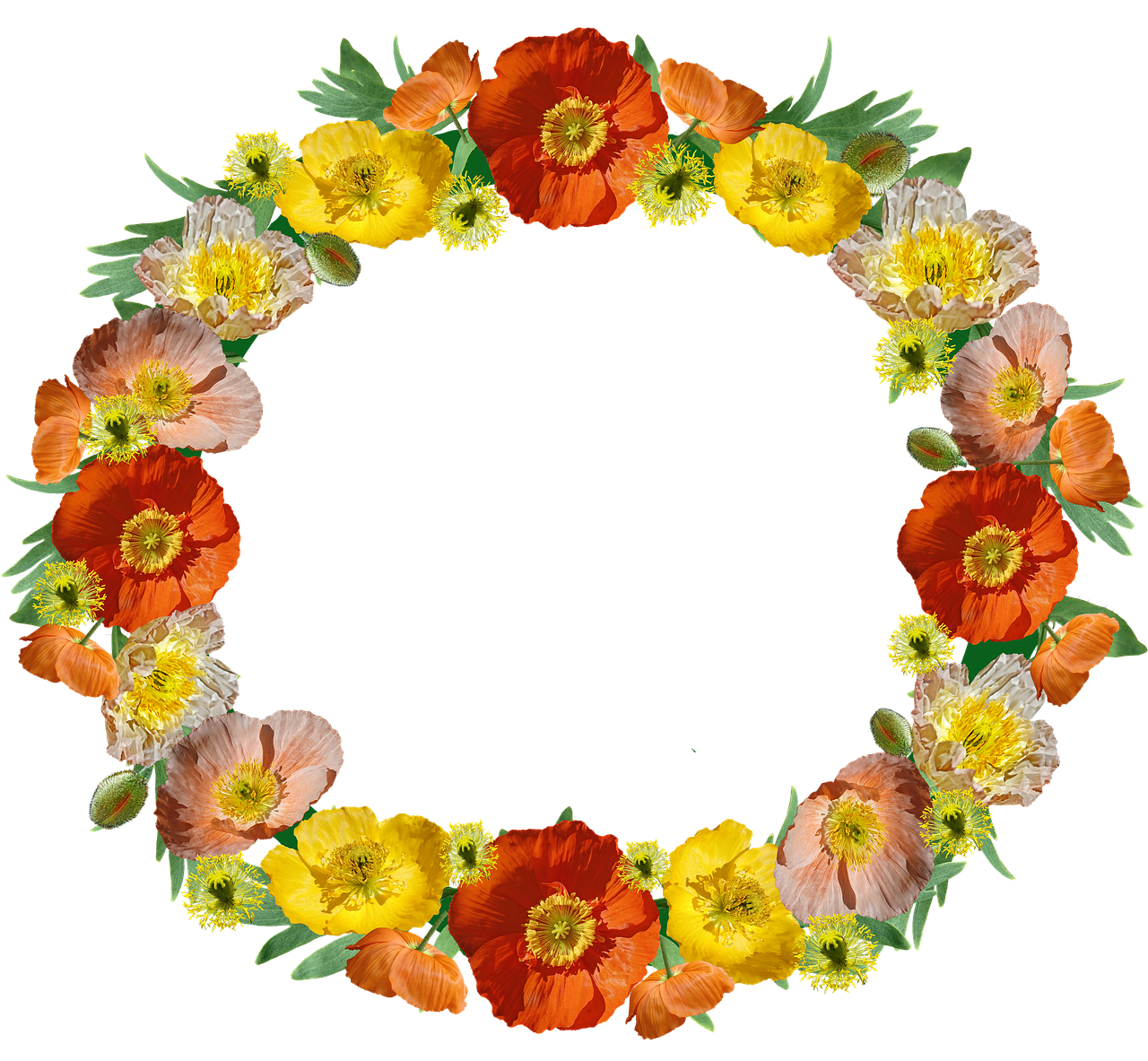
Seasonal Wreaths
Explore creative and simple DIY wreath ideas that will enhance the charm of your front door, making it a welcoming sight for guests and a reflection of your personal style.
Wreaths are not just for the holidays; they can be a fantastic way to celebrate the changing seasons throughout the year! Imagine stepping outside your door and being greeted by a beautiful, vibrant wreath that reflects the current season. It’s like a warm hug from nature every time you arrive home. Seasonal wreaths can be crafted using a variety of materials and colors that embody the essence of spring, summer, fall, and winter.
When creating seasonal wreaths, think about incorporating elements that represent each time of year. For instance, in the spring, you might want to use fresh blossoms and pastel colors to symbolize new beginnings. Summer wreaths can burst with bright florals and tropical leaves, while autumn wreaths can be adorned with rich oranges, reds, and yellows, featuring elements like pinecones and dried leaves. Winter wreaths can take on a more minimalist approach, utilizing evergreen branches and perhaps some festive decorations to bring a touch of holiday cheer.
Here’s a quick breakdown of what you might consider for each season:
| Season | Common Elements | Color Palette |
|---|---|---|
| Spring | Fresh flowers, greenery, ribbons | Pastels, bright greens |
| Summer | Tropical leaves, sunflowers, fruits | Bright yellows, vibrant blues |
| Fall | Dried leaves, berries, mini pumpkins | Oranges, browns, deep reds |
| Winter | Evergreens, pinecones, ornaments | Dark greens, whites, metallics |
Creating a seasonal wreath allows you to express your creativity and personalize your home. Plus, it’s a fun project that you can involve your family in! Gather some supplies and let your imagination run wild. You can even mix and match elements from different seasons to create a unique design that reflects your personal style. The best part? You can change it up whenever you like, keeping your front door fresh and inviting all year round!
Q: How often should I change my seasonal wreath?
A: It’s up to you! Many people like to switch their wreaths with each season, while others may prefer to change them for specific holidays or events.
Q: What materials do I need to create a seasonal wreath?
A: Basic materials include a wreath base (like grapevine or foam), floral wire, scissors, and your choice of decorations such as flowers, leaves, and ribbons.
Q: Can I use fresh flowers in my wreath?
A: Yes, fresh flowers can be used, but keep in mind they may not last as long as artificial ones. Consider using a mixture of both for a beautiful effect!
Q: How do I store my wreath when it’s not in use?
A: Store your wreath in a cool, dry place, preferably in a box to keep it dust-free. Avoid direct sunlight to prevent colors from fading.
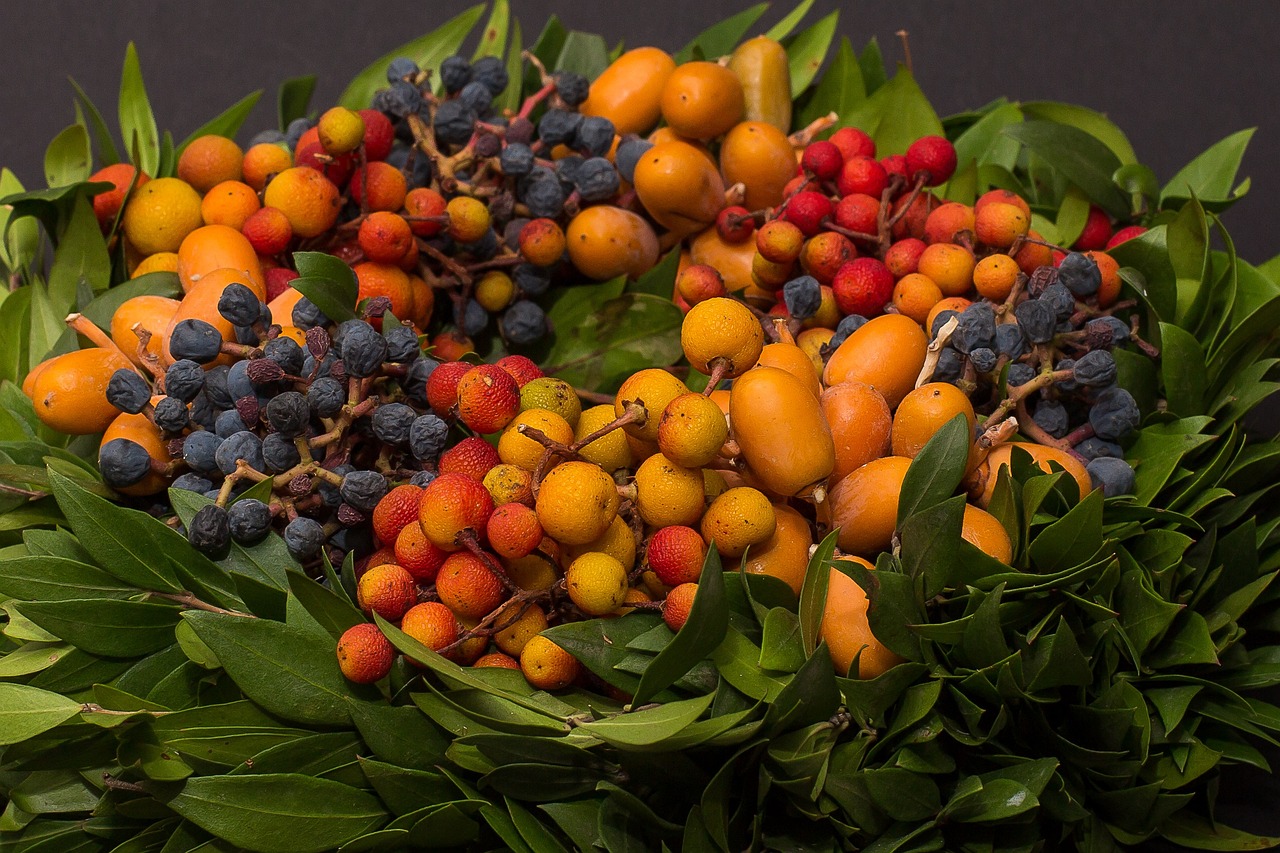
Floral Arrangements
When it comes to making your front door pop with personality, are a fantastic way to do it. Imagine stepping up to your home and being greeted by a stunning wreath bursting with color and life. Whether you prefer the fresh scent of real blooms or the lasting beauty of artificial flowers, creating a floral wreath is a delightful project that can be tailored to your unique style. The beauty of floral arrangements lies not only in their visual appeal but also in how they can evoke emotions and memories. They can transform a mundane entrance into a warm and inviting space that reflects your personal touch.
To get started, think about the theme you want to convey. Are you aiming for something bright and cheerful for spring, or perhaps a more subdued and elegant look for the fall? The options are endless! You can mix and match colors, shapes, and sizes to create a wreath that perfectly suits your taste. For example, consider using a combination of large peonies and delicate daisies for a whimsical feel, or opt for rich, deep-colored roses and eucalyptus for a more sophisticated vibe. The key is to let your creativity flow and have fun with the process!
One of the most important aspects of crafting a floral wreath is choosing the right flowers. It's crucial to select blooms that not only complement each other but also fit the overall aesthetic you’re going for. Here are a few tips to keep in mind:
- Color Combinations: Think about the color wheel! Complementary colors can create a striking contrast, while analogous colors can provide a more harmonious look.
- Flower Types: Mix different types of flowers for texture and dimension. Combine larger blooms with smaller fillers to create depth.
- Seasonal Choices: Utilize flowers that are in season to ensure freshness and vibrancy.
Now, let’s talk about the materials you’ll need to create your floral masterpiece. A sturdy base is essential for holding your arrangement together. You can use a variety of bases such as grapevine, foam, or wire. Each type offers different benefits: grapevine gives a rustic feel, foam allows for easy insertion of stems, and wire provides a flexible option for shaping your design. Think about what will best suit your vision!
Once you have your base ready, it’s time to get crafting. Start by laying out your flowers before attaching them to the wreath. This way, you can play around with the arrangement and make adjustments as needed. When you’re satisfied, begin securing the flowers in place with floral wire or hot glue. Remember, the goal is to create a balanced look, so step back occasionally to assess your work from a distance.
Lastly, don’t forget about the finishing touches! Adding elements like ribbons, berries, or even seasonal decorations can elevate your wreath to the next level. A beautiful ribbon can serve as a lovely bow at the top, while sprigs of berries can add a pop of color and texture. The possibilities are endless, and the result will be a stunning floral arrangement that welcomes everyone who visits your home.
Q: How long will my floral wreath last?
A: The lifespan of your wreath depends on the materials used. Fresh flowers typically last about a week, while artificial flowers can last for years with proper care.
Q: Can I use dried flowers in my wreath?
A: Absolutely! Dried flowers can add a unique texture and a rustic charm to your wreath. Just ensure they are properly preserved to maintain their beauty.
Q: How do I store my wreath when not in use?
A: For fresh wreaths, keep them in a cool place and mist them with water. For artificial wreaths, store them in a dry, dark area to prevent fading.

Choosing the Right Flowers
When it comes to creating a stunning wreath, is essential. Think of your wreath as a canvas; the flowers are the vibrant colors that bring it to life. You want to select blooms that not only look beautiful but also complement the style of your home and the season. Imagine stepping up to your front door and being greeted by a burst of color that perfectly encapsulates the time of year—now that’s a welcoming sight!
Start by considering the color combinations that resonate with you. Do you prefer soft pastels for spring, or are bold, rich hues more your style? For instance, a combination of lavender, pale pink, and white can create a lovely spring vibe, while deep reds, oranges, and yellows can evoke the warmth of autumn. You can use a color wheel to help you find complementary colors that will make your wreath pop. Remember, the flowers you choose should reflect your personal taste and the mood you want to set.
Next, think about the flower types that suit various styles and occasions. For a rustic look, consider using wildflowers or sunflowers, which can add a touch of charm and earthiness. On the other hand, if you’re aiming for something more elegant, roses or peonies can bring sophistication to your design. Additionally, don’t forget about the texture! Mixing flowers with different shapes and sizes can create visual interest. For example, pairing fluffy hydrangeas with delicate daisies can result in a wreath that is both eye-catching and inviting.
Here’s a quick guide to help you choose the right flowers for your wreath:
| Season | Flower Suggestions | Color Palette |
|---|---|---|
| Spring | Daisies, Tulips, Hyacinths | Pastels, Brights |
| Summer | Sunflowers, Zinnias, Lavender | Yellows, Pinks, Blues |
| Fall | Mums, Asters, Dahlias | Oranges, Reds, Browns |
| Winter | Pine Cones, Eucalyptus, Holly | Greens, Whites, Reds |
By following these tips, you can ensure that each wreath you create not only looks stunning but also feels personal and meaningful. Remember, the flowers you choose are a reflection of your style and the atmosphere you want to create at your front door. So, take your time, enjoy the process, and let your creativity shine!
Q: How do I choose flowers that will last?
A: Opt for hardy flowers that are known for their longevity, such as dried flowers or preserved blooms. If you’re using fresh flowers, consider adding floral preservatives to extend their life.
Q: Can I mix fresh and artificial flowers?
A: Absolutely! Mixing fresh and artificial flowers can create a unique look, just be sure to balance them out so it looks intentional.
Q: How do I maintain my wreath?
A: Depending on the materials used, you can lightly dust your wreath and store it in a cool, dry place when not in use. If using fresh flowers, keep them hydrated and in a cool environment.
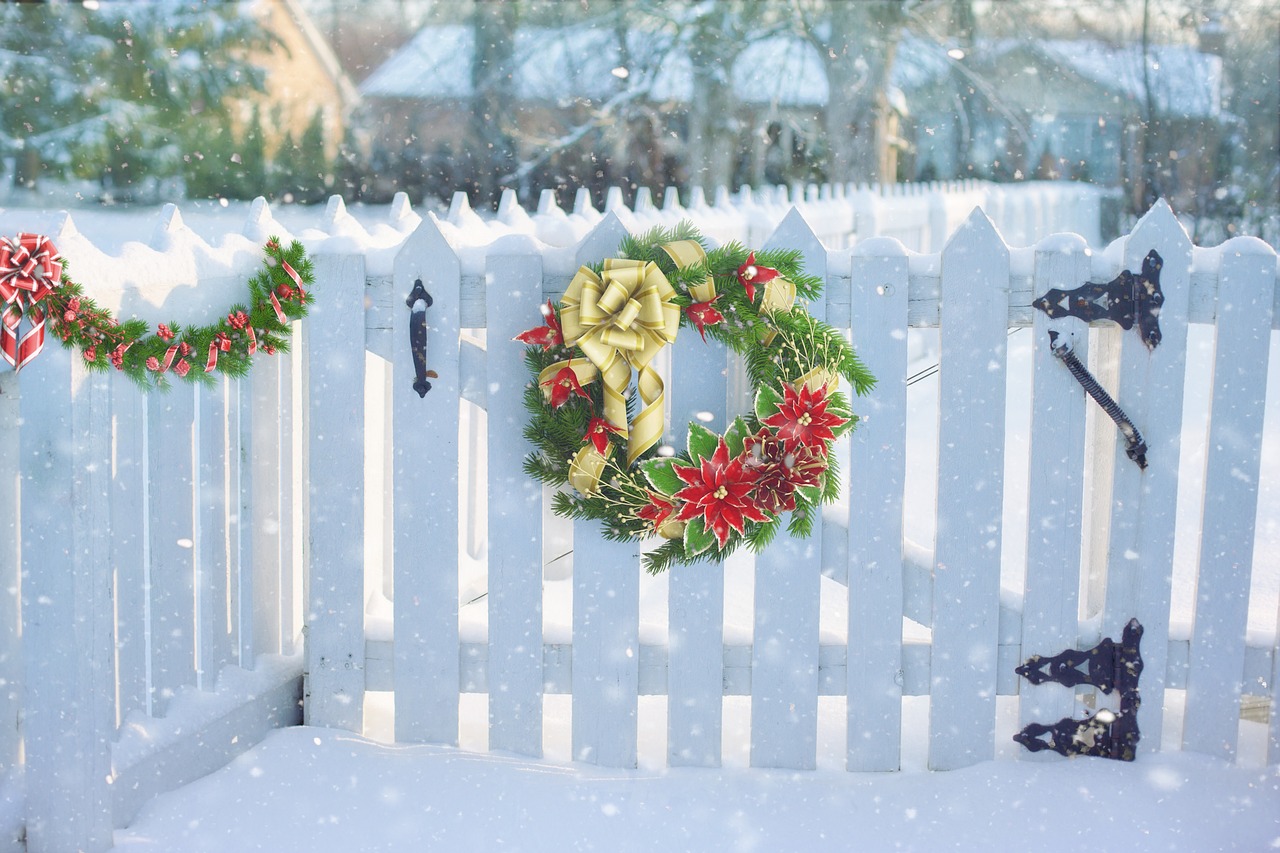
Fresh vs. Artificial Flowers
When it comes to creating stunning wreaths, one of the biggest decisions you'll face is whether to use fresh or artificial flowers. Each option has its own set of pros and cons, which can significantly influence the overall look, feel, and longevity of your wreath. Fresh flowers bring a vibrant, natural beauty that can be hard to replicate, while artificial flowers offer convenience and durability. So, how do you decide which is right for your project?
Let's start with fresh flowers. There's something undeniably charming about their fragrance and vivid colors. When you walk into a home adorned with fresh blooms, it feels alive and inviting. However, fresh flowers come with a few challenges:
- Short Lifespan: Fresh flowers can wilt and fade within a week or two, especially if exposed to sunlight or heat.
- Maintenance: Regular watering and care are necessary to keep them looking their best.
- Seasonal Availability: Depending on the time of year, some flowers may be hard to find or more expensive.
On the flip side, artificial flowers have their own unique advantages. They offer a wide variety of styles and colors that can be difficult to find in nature. Plus, they’re incredibly low-maintenance:
- Longevity: Artificial flowers can last for years without wilting or fading, making them a great investment.
- No Watering Required: You can simply dust them off occasionally to keep them looking fresh.
- Consistent Appearance: Unlike fresh flowers, artificial blooms maintain their color and shape regardless of the season.
However, there are some downsides to consider with artificial flowers as well. They can sometimes look less realistic than fresh flowers, depending on the quality. Cheaper artificial flowers may have a plastic look that can detract from the overall aesthetic of your wreath. Investing in high-quality faux flowers can make a significant difference in achieving that lifelike appearance.
In summary, the choice between fresh and artificial flowers ultimately depends on your personal preferences and the specific look you want to achieve with your wreath. If you’re aiming for a natural, seasonal vibe and don’t mind a little upkeep, fresh flowers might be your best bet. However, if you’re looking for a long-lasting option that requires minimal effort, artificial flowers could be the way to go. Whichever you choose, both options can create beautiful, eye-catching wreaths that enhance your front door's charm!
To help you further in your wreath-making journey, here are some common questions and answers:
- Q: How long do fresh flowers typically last in a wreath?
A: Fresh flowers can last anywhere from a few days to two weeks, depending on the type of flowers used and the care they receive. - Q: Can I mix fresh and artificial flowers in my wreath?
A: Absolutely! Mixing both can create a unique and textured look, just ensure that the artificial flowers complement the fresh ones. - Q: How do I keep my fresh flowers looking vibrant longer?
A: Keep them in a cool area, away from direct sunlight, and regularly mist them with water.

Seasonal Flower Options
When it comes to creating a stunning wreath, choosing the right flowers for the season can make all the difference. Each season brings its own unique palette and selection of blooms, allowing you to reflect the beauty of nature right on your front door. For example, in the spring, you might want to incorporate vibrant tulips, cheerful daffodils, and delicate cherry blossoms that symbolize renewal and growth. These flowers not only add a splash of color but also evoke a sense of joy and freshness.
As we transition into summer, the options expand to include sunflowers, hydrangeas, and zinnias, which bring warmth and a feeling of abundance. Imagine a wreath bursting with bright yellows and deep blues, welcoming guests with a sense of vitality and cheer. In contrast, as the leaves start to change in autumn, you might opt for rich hues of orange, red, and gold, featuring flowers like chrysanthemums, asters, and even dried elements like wheat or corn husks. This not only celebrates the harvest season but also creates a cozy, inviting atmosphere.
Finally, in the winter months, while many flowers may be scarce, you can still create beautiful arrangements using evergreens, holly, and even some seasonal blooms like poinsettias or amaryllis. These elements add a touch of elegance and festivity, perfect for the holiday season. To help you visualize the seasonal flower options, here's a quick reference table:
| Season | Flower Options |
|---|---|
| Spring | Tulips, Daffodils, Cherry Blossoms |
| Summer | Sunflowers, Hydrangeas, Zinnias |
| Autumn | Chrysanthemums, Asters, Dried Wheat |
| Winter | Evergreens, Holly, Poinsettias |
By selecting seasonal flowers, you're not only enhancing the aesthetic appeal of your wreath but also embracing the natural cycle of life and beauty that each season offers. So next time you think about crafting a wreath, consider the flowers that best represent the time of year and let your creativity flourish!
- What are the best flowers for a spring wreath?
Spring wreaths can include tulips, daffodils, and cherry blossoms for a fresh and vibrant look. - Can I use dried flowers in my wreath?
Yes! Dried flowers can add texture and longevity to your wreath, especially in autumn and winter. - How do I preserve fresh flowers in my wreath?
Consider using floral preservatives or drying techniques to maintain their beauty for a longer period. - Are artificial flowers a good option?
Absolutely! Artificial flowers can provide a consistent look and are perfect for year-round wreaths.
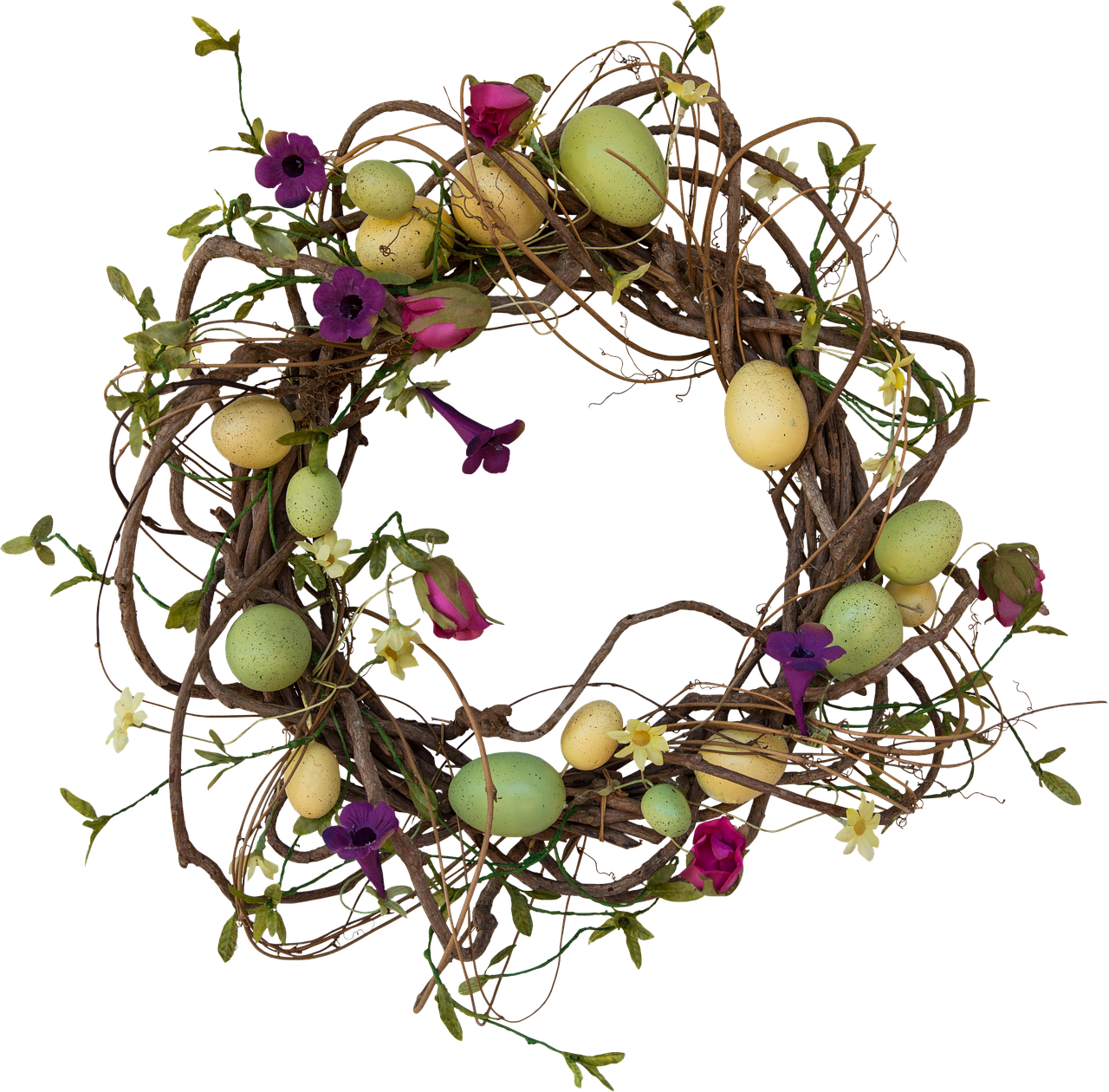
Wreath Bases
When it comes to crafting the perfect wreath, the foundation is just as important as the decorative elements. A sturdy base not only supports your design but also influences the overall aesthetic and durability of your creation. There are several materials you can choose from, each offering unique characteristics that can enhance your wreath-making experience. Let’s take a closer look at some popular options for wreath bases:
- Grapevine Wreaths: These are made from twisted vines and are incredibly versatile. Their natural, rustic appearance makes them perfect for a variety of styles, from farmhouse chic to bohemian flair. Plus, they’re easy to work with, allowing you to attach flowers and embellishments effortlessly.
- Foam Wreaths: If you’re looking for a lightweight option, foam bases are your best bet. They come in various shapes and sizes, making them ideal for seasonal decorations. However, they can be a bit more challenging to attach items to since you may need to use pins or hot glue.
- Wire Wreath Frames: These frames provide strong support and are great for heavier decorations. You can easily wrap them with fabric, greenery, or other materials. Wire frames are perfect for those who want a more structured look, and they hold up well over time.
- Wooden Wreath Bases: For a more rustic touch, wooden wreath bases offer a sturdy and charming option. They can be painted or stained to match your decor, giving you a lot of creative freedom. However, they may require more effort to attach decorations securely.
Each type of base has its pros and cons, so choosing the right one depends on your personal style and the specific look you want to achieve. Consider the weight of your decorations, the seasonality of your design, and how long you want your wreath to last. For instance, if you’re crafting a wreath for a special occasion, a foam or wire base might be ideal for holding more elaborate decorations, while a grapevine or wooden base could be perfect for a more natural look.
Ultimately, the base you choose will set the tone for your entire wreath. It’s like the canvas for a painting; the more you invest in it, the more beautiful your final piece will be. So, take your time to explore and select the base that speaks to you and fits your vision. Happy wreath-making!
Q1: What is the best type of base for a beginner?
A: Grapevine wreaths are often recommended for beginners due to their ease of use and versatility. They allow for a variety of decorations to be easily attached without the need for special tools.
Q2: Can I use multiple types of bases together?
A: Absolutely! Combining different bases can create a unique and textured look. For example, you might use a grapevine base as a foundation and attach floral elements to a foam or wire frame for added dimension.
Q3: How do I ensure my wreath lasts a long time?
A: To enhance the longevity of your wreath, consider using preserved or artificial elements, especially if you're using a fresh base. Additionally, make sure to store your wreath in a cool, dry place when not in use.
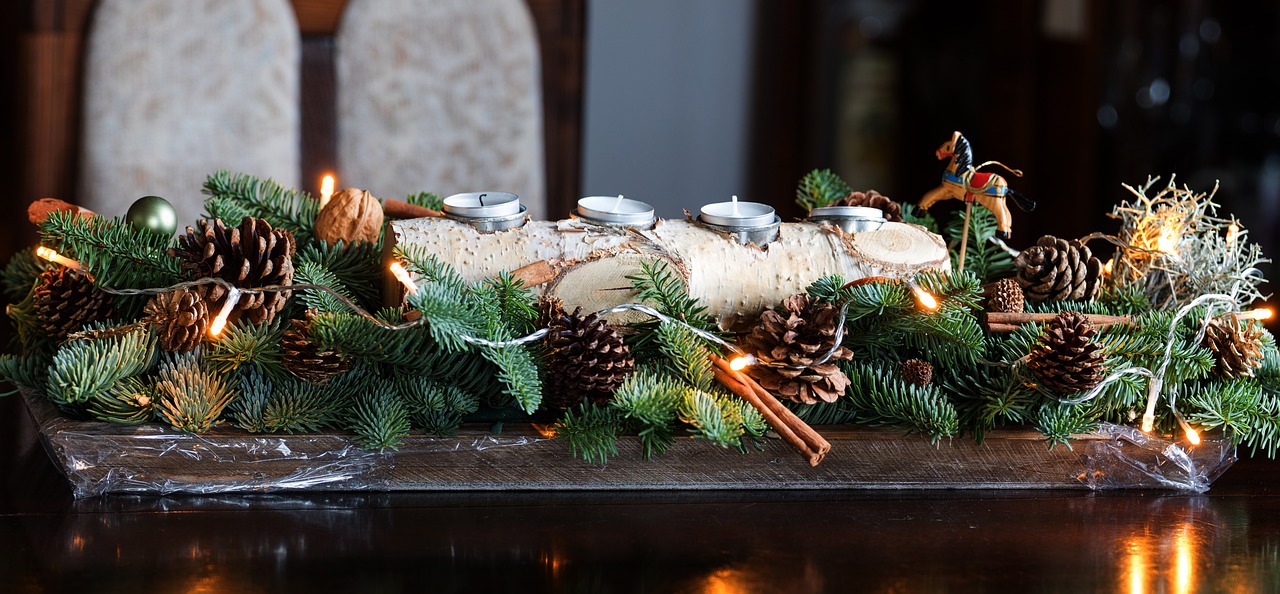
Natural Elements
Incorporating into your DIY wreath design is a fantastic way to bring a touch of the outdoors inside, creating a rustic and organic look that truly celebrates the beauty of nature. Imagine stepping into your home and being greeted by a wreath adorned with twigs, leaves, and berries, each element telling a story of the season. Not only do these materials add texture and depth to your wreath, but they also evoke a sense of warmth and comfort, making your front door a welcoming sight for guests.
One of the best parts about using natural elements is that they can be sourced right from your backyard or local parks. This not only saves money but also allows you to create a unique wreath that reflects your personal style. When foraging for materials, consider the following tips:
- Look for fallen branches, twigs, and leaves that have interesting shapes and colors.
- Gather seasonal berries or fruits that can add a pop of color.
- Be mindful of the environment; only take what you need and ensure that you’re not damaging plants or habitats.
But how do you preserve these natural elements so your wreath remains beautiful and lasts longer? It’s essential to utilize some preservation techniques. For instance, you can use glycerin to keep leaves supple and vibrant. Simply mix one part glycerin with two parts water, and soak the leaves for a few days. This method helps maintain their color and flexibility, allowing your wreath to look fresh for weeks. Additionally, you can dry flowers and herbs by hanging them upside down in a cool, dark place, which not only preserves their shape but also enhances their colors.
Let’s not forget about the seasonal aspect of natural materials. Different times of the year offer unique opportunities for wreath-making. For instance, in the fall, you might find vibrant red and orange leaves, acorns, and pinecones, while spring brings blooming flowers and fresh greenery. Here’s a quick look at some seasonal elements you can incorporate into your wreaths:
| Season | Natural Elements |
|---|---|
| Spring | Fresh flowers, budding leaves, twigs |
| Summer | Wildflowers, herbs, colorful berries |
| Fall | Autumn leaves, acorns, pinecones |
| Winter | Evergreen branches, holly, berries |
By embracing natural elements, you’re not only creating a stunning wreath but also fostering a deeper connection with the environment. Each time you walk past your front door, you’ll be reminded of the beauty that nature offers and the creativity that resides within you. So grab your scissors, venture outside, and start collecting materials that inspire you to craft a wreath that’s not just decor, but a piece of art that resonates with the changing seasons.
Q: How long will a wreath made with natural elements last?
A: The lifespan of a wreath made with natural elements can vary depending on the materials used and how well they are preserved. Generally, if you use preservation techniques, your wreath can last several weeks to a few months.
Q: Can I use dried flowers in my wreath?
A: Absolutely! Dried flowers are a great option for adding a rustic touch to your wreath. They are lightweight and can last for a long time if stored properly.
Q: Where can I find natural materials for my wreath?
A: You can find natural materials in your backyard, local parks, or even during nature walks. Just make sure to collect responsibly and avoid damaging the environment.

Foraging for Materials
Foraging for materials to create your own stunning wreath can be an exciting and fulfilling experience. Imagine stepping outside your door and finding an abundance of natural treasures just waiting to be transformed into a beautiful decoration! Whether you're wandering through your backyard, a nearby park, or a nature trail, there are countless opportunities to gather unique elements that will enhance your wreath's charm. But where do you start? Here are some tips to help you embark on your foraging adventure.
First, it's essential to understand the types of materials you can look for. Nature offers a plethora of options that can add texture and color to your wreath. Consider incorporating:
- Twigs and branches: Perfect for a rustic look, they can form the base or add structure.
- Leaves: From vibrant greens in spring to the rich hues of autumn, leaves provide a seasonal touch.
- Berries: Bright and colorful, berries can add pops of color and contrast against other materials.
- Pinecones: These natural accents are fantastic for fall and winter wreaths, bringing a cozy feel.
As you forage, always keep an eye out for the seasonal changes. Different times of the year yield different materials, so what you find in spring will differ from what’s available in winter. For instance, spring is a great time for budding flowers and fresh greenery, while autumn is perfect for colorful leaves and berries. Not only does this seasonal variety keep your wreaths fresh and exciting, but it also allows you to create pieces that truly reflect the beauty of each season.
Furthermore, ensure you're foraging responsibly. It's important to be aware of your local regulations regarding foraging, as some areas have restrictions to protect native plants and wildlife. Always ask for permission if you're foraging on private land and be mindful of the environment. Taking only what you need and leaving enough for nature to thrive is a great way to show respect for the ecosystem.
Once you've gathered your materials, it's time to think about how to preserve them. Natural elements can dry out quickly, so consider using a mixture of glycerin and water to help keep leaves and flowers looking fresh. This technique allows you to maintain the vibrant colors and textures of your foraged finds, ensuring your wreath remains beautiful for longer.
In conclusion, foraging for materials can be a delightful way to connect with nature while creating something unique and personal for your home. So grab your basket, head outside, and let the beauty of the natural world inspire your next DIY wreath project!
Q: What are some good places to forage for wreath materials?
A: Great places to forage include local parks, nature trails, and even your own backyard. Look for areas with a variety of plants, trees, and shrubs.
Q: How can I preserve the natural materials I gather?
A: You can preserve materials by soaking them in a glycerin and water solution, which helps maintain their color and flexibility.
Q: Is it okay to forage in my neighborhood?
A: Always check local laws and regulations. If you're on public land, be sure to follow guidelines, and if you're on private property, always ask for permission.
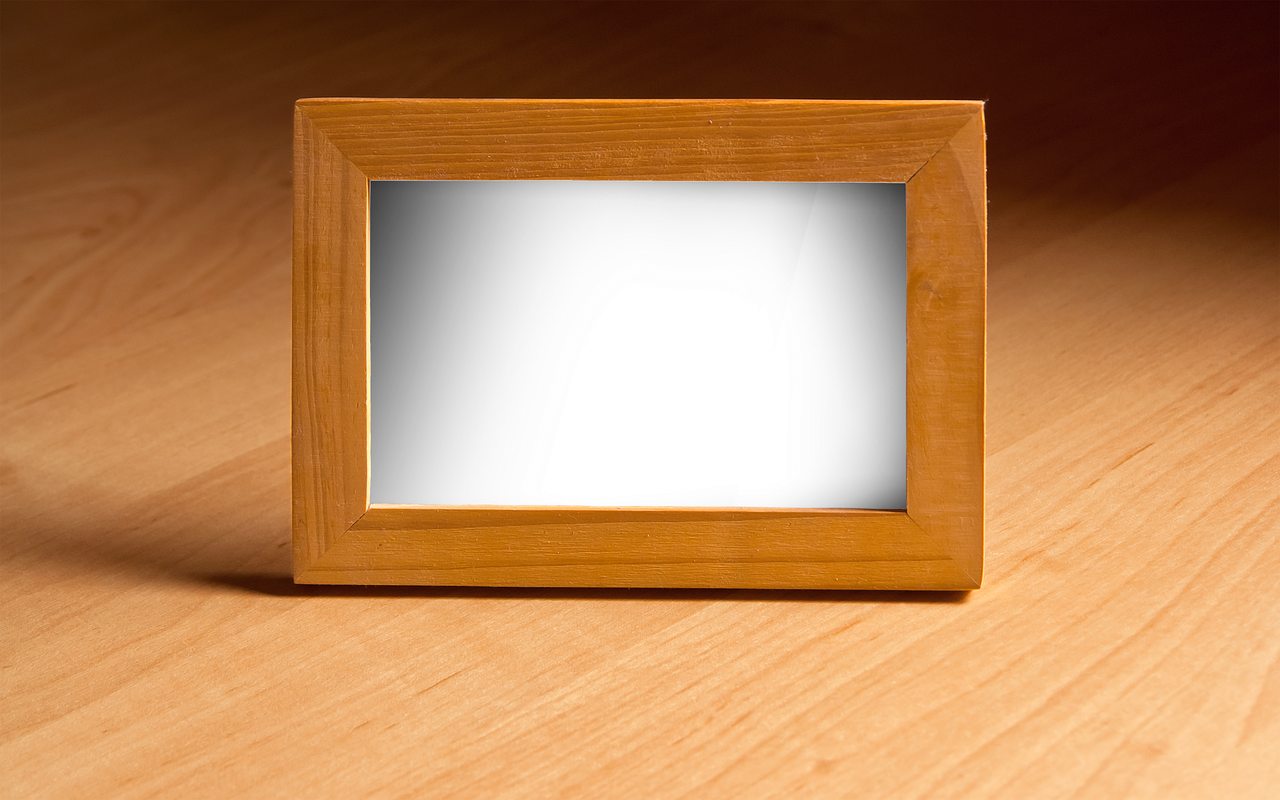
Preserving Natural Elements
When it comes to creating wreaths that incorporate the beauty of nature, preserving natural elements is crucial for maintaining their charm and longevity. Imagine crafting a stunning wreath adorned with twigs, leaves, and berries, only to see it wilt and fade within days. To avoid this, there are several techniques you can use to keep your natural materials looking fresh and vibrant for as long as possible. One popular method is using a glycerin solution, which helps retain moisture in leaves and flowers, allowing them to maintain their color and flexibility.
To prepare a glycerin solution, simply mix one part glycerin with two parts water in a container. Submerge your chosen foliage in this mixture for about two weeks. You'll be amazed at how well this technique works, as it transforms ordinary leaves into stunning, preserved pieces that can last for months. Additionally, consider using silica gel, which is another effective method for preserving flowers. This desiccant absorbs moisture and helps maintain the shape and color of your blooms. Just bury the flowers in silica gel for a few days, and you'll have beautiful, preserved flowers ready for your wreath.
Another method worth exploring is air-drying. This technique is particularly effective for herbs and some flowers. Simply hang your chosen materials upside down in a cool, dark place with good air circulation. As the materials dry, they will retain their shape and can be used to create a rustic and organic look in your wreath. However, be mindful that not all materials dry well; some may become brittle or lose their color. To help you decide which method to use, here’s a quick comparison:
| Preservation Method | Advantages | Disadvantages |
|---|---|---|
| Glycerin Solution | Retains color and flexibility | Requires preparation time |
| Silica Gel | Maintains shape and color | Can be more expensive |
| Air-Drying | Simple and cost-effective | May not work for all materials |
Whichever method you choose, remember to handle your preserved materials with care. They may be more delicate than fresh foliage, and a little love goes a long way in ensuring your wreath looks stunning for weeks to come. By incorporating these preservation techniques, you not only enhance the beauty of your wreath but also celebrate the natural elements that inspired its creation.
- How long can preserved materials last? Preserved materials can last several months to a year, depending on the preservation method used and the environmental conditions.
- Can I use any type of flower for preservation? Not all flowers preserve well. It's best to choose sturdy flowers like roses or daisies, which tend to hold their shape and color better.
- Where can I find glycerin and silica gel? Both glycerin and silica gel can be found at craft stores, pharmacies, or online retailers.
Frequently Asked Questions
- What materials do I need to create a DIY wreath?
To get started on your DIY wreath, you'll need a sturdy base, such as grapevine, foam, or wire. Additionally, gather your chosen flowers (fresh or artificial), natural elements like twigs and leaves, and some crafting supplies like wire cutters, glue, and ribbon. It's like gathering your ingredients before cooking a delicious meal!
- How do I choose the right flowers for my wreath?
Selecting flowers is crucial for achieving the desired aesthetic. Consider the color palette you want to work with and the occasion. For example, vibrant colors can bring energy, while soft pastels create a calm vibe. Mixing different flower types can add depth and texture, much like layering flavors in a recipe.
- Are fresh flowers better than artificial ones?
This really depends on your preferences! Fresh flowers provide a lovely scent and natural beauty but may wilt over time. On the other hand, artificial flowers are long-lasting and can be reused for different seasons. Think of it as choosing between a fresh cupcake and a beautifully decorated cake that lasts longer!
- What seasonal flowers should I consider for my wreath?
Seasonal flowers can enhance the overall theme of your wreath. For spring, think tulips and daffodils; summer might bring sunflowers and daisies; autumn can feature chrysanthemums and dried leaves; and winter could include evergreens and holly. It's like dressing your wreath in the colors of the seasons!
- How can I incorporate natural elements into my wreath?
Natural elements like twigs, leaves, and berries can add a rustic charm to your wreath. You can forage for these materials in your local area, ensuring a unique touch. Just remember to preserve them properly so they last longer, much like keeping a garden thriving through the seasons!
- What techniques can I use to preserve natural materials?
To preserve natural elements, you can dry leaves and flowers by hanging them upside down in a cool, dark place. Another method is using glycerin, which helps retain moisture and flexibility. Think of it as giving your materials a spa day to keep them looking fresh and beautiful!



















